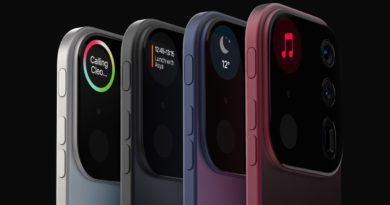Sprint 5G network rollout: Locations, phones, price and more
![]()
The Sprint 5G network spent most of 2019 ramping up. After ending May of last year with the launch of service in Atlanta, Dallas, Houston and Kansas City, Sprint’s network expanded to additional markets, with ten cities now boasting some 5G coverage.
The number of phones that can connect with Sprint’s new network has grown, too. After the LG’s V50 ThinQ 5G smartphone became the first 5G phone to work on Sprint’s network, the wireless carrier added other models, culminating with the arrival of Samsung’s new lineup of 5G-ready Galaxy S20 phones this spring.
But the biggest changes lie ahead for Sprint, which now finds itself part of T-Mobile after a long-promised merger finally came to pass. Sprint’s 5G network was the centerpiece of that deal, and now the combined carrier is working to fold Sprint’s spectrum into the T-Mobile 5G network.
Here’s everything you need to know about Sprint’s 5G plans — what it’s done so far, and what a T-Mobile-focused future means for current Sprint customers.
Sprint 5G cities: Where you can get it first
Atlanta, Dallas, Houston and Kansas City were the first to get 5G coverage from Sprint, with Chicago joining the party in July 2019. On Aug. 27, Los Angeles, New York City, Phoenix and Washington D.C., became part of Sprint’s 5G network.
Prior to Super Bowl LIV this February in Miami, Sprint said that it had boosted coverage around the Hard Rock Stadium with Massive MIMO radios that provide 5G speeds using Sprint’s 2.5GHz spectrum. (More on that spectrum below.) In addition, the carrier has also installed MIMO radios around downtown and midtown Miami, Fort Lauderdale, Miami Beach and the Palm Beach Convention Center to provide 5G coverage in high-traffic areas for the big game, although Sprint’s 5G footprint will remain in that area long after the San Francisco 49ers and Kansas City Chiefs finished playing.
Although Verizon technically beat Sprint to the 5G punch in cities like Chicago, Verizon has been clear that its coverage at this time doesn’t blanket the entirety, or even majority, of those cities. In Chicago, for example, Verizon’s 5G zones are currently concentrated around tourist attractions in the West and South loops. Sprint 5G coverage doesn’t extend to every corner of the nine cities it’s launched in, either, but its footprint is larger than some of its rivals. And even after launching in those nine cities, Sprint said in October that it’s added additional neighborhoods, further extending 5G availability to an estimated 16 million people.
Sprint customers are also seeing the first benefits to being part of the T-Mobile family — at least if they have a newer 5G phone. Starting in April, T-Mobile that Sprint subscribers with a Galaxy S20 will have access to the Uncarrier’s nationwide 5G network.
Sprint 5G: How fast is it?
This question highlights the fundamental difference between Sprint’s 5G service and everyone else’s — and unfortunately, it’s not a difference that totally works to the carrier’s favor.
Sprint is devoting excess supply of its mid-band spectrum to 5G, rather than using millimeter wave (mmWave) as Verizon and others are doing. And it’s mmWave that will ultimately bring the 1Gbps-plus speeds and imperceptible latency that carriers have been promising us 5G would deliver for the last several years.
That said, Sprint’s 2.5GHz-based 5G service is still faster than LTE. To get it up and running, the carrier augmented its LTE deployment with Massive MIMO antennas to support 5G as well. This strategy doesn’t require quite the same investment in new technologies as mmWave 5G, so it allows Sprint to move a bit more swiftly in bringing 5G to its customers. Mid-band spectrum also reaches farther than mmWave, which is likely how Sprint can justify its “real coverage” claims.
The downside to this tactic, however, will be slower speeds out of the gate. At Sprint’s 5G launch event in Dallas last year, John Saw, Sprint’s chief technology officer, said that while gigabit speeds were possible, the reality is that download speeds will be closer to hundreds of megabits per second.
“We want to set the right expectations. You should see more than 100 MBps when you’re driving around with your phone,” said Saw.
When we tested Sprint’s 5G network in Dallas using an LG V50, we saw speeds between 300 Mbps and 600 Mbps, and we enjoyed some fast download speeds for apps and videos for the most part. Verizon’s 5G network hit faster speeds (we used a Galaxy S10 5G in those tests), but we found it easier to stay connected to Sprint’s network.
We observed the same thing in Chicago, the first city where we can test 5G networks head-to-head since Sprint and Verizon have both flipped the switch on 5G in the Windy City. Our July 2019 testing found that Verizon produced much faster speeds — we hit 700 Mbps on a Verizon phone on the same corner where a Galaxy S10 5G on Sprint’s network topped out at 205 Mbps. Downloading apps and videos showed similar performance gaps.
But when we wandered around Chicago, the 5G icon remained in the status bar more consistently on Sprint’s phone. Coverage remains sporadic for Verizon. Sprint’s hoping that extending coverage will satisfy customers for now, with faster speeds coming later.
For what it’s worth, Rootmetrics noticed the same thing when the third-party testing firm looked at 5G performance. Verizon’s network offers the better speeds, but rival networks like Sprint 5G offers more extensive coverage. And Sprint’s performance was faster than what T-Mobile and AT&T offered with their low-band networks.
Sprint’s first 5G phones
Sprint was quick out of the gate with a trio of 5G phones in 2019: the LG V50 ThinQ, Samsung Galaxy S10 5G and OnePlus 7 Pro 5G. But if you were an early adopter of one of those devices, your time with Sprint’s 5G coverage may be ending just as it started.
The problem? It goes back to the T-Mobile-Sprint merger, and T-Mobile’s efforts to incorporate Sprint’s 5G towers into its current network. T-Mobile needed to reconfigure Sprint’s existing 5G deployment to mesh with its own network because the phones sold last year don’t work with T-Mobile’s low-band-based 5G network. As a consequence, if you bought a 5G phone from Sprint prior to the Galaxy S20 release, it’s not going to connect to 5G towers going forward.
That likely feels like a kick in the teeth to early Sprint adopters, though T-Mobile is removing some of the sting by allowing those customers to migrate to the compatible Galaxy S20 for a pro-rated amount.
Besides the S20, the Galaxy S20 Plus and Galaxy S20 Ultra both work on Sprint’s 5G network and will continue to do so after the migration to T-Mobile’s 5G. Lease any of those three Samsung models through an 18-month Sprint Flex agreement, and you can cut down on your monthly payment.
In addition to those early 5G phones, Sprint sold a a third device manufactured by HTC. Called the 5G Hub, this $600 product is more reminiscent of a hotspot with some extra features. There’s a 5-inch full-HD display on board, as well as stereo speakers and Qualcomm’s Snapdragon 855 processor running Android. It seems to be gone from the Sprint website as of this writing — not surprising given the fate of other 5G devices Sprint offered in 2019.
Sprint 5G: What you’ll pay for service
Buy a 5G phone at Sprint, and you’ll need to activate it on Sprint’s $80/month Unlimited Premium plan. An additional line is $60/month, and any line after two is $20/month. (That’s a discounted price on those extra lines, since the third, fourth and fifth lines typically cost $40 each on Sprint’s Unlimited Premium plan.)
That’s more in line with unlimited plan pricing from Sprint’s rivals — and Sprint’s current unlimited plan doesn’t even rank as the best unlimited data plan you can get right now. At $60 a month, it’s certainly one of the cheapest, though it does carry with it limitations on traffic for certain use cases, like video and music streaming, as well as gaming.
For a little perspective, Verizon is tacking on a 5G premium of $10 per month to its existing unlimited plans (though it’s waiving that fee for now on its $80 and $90 unlimited plans). And for what it’s worth, while all four major carriers typically throttle traffic after a certain point on unlimited plans, Verizon is holding off from deprioritizing 5G early adopters — for now, anyway.
Sprint vs. other carriers
Verizon has continued to expand its roster of 5G cities. The carrier ended 2019 with 5G service live in more than 30 cities, albeit in much the same fashion as it brought 5G to Chicago and Minneapolis — select areas within cities first, before full coverage much later.
AT&T serves 35 U.S. cities with its high-speed 5G Plus service right now (and no, we’re not talking about its fake 5G Evolution branding exercise). Both the Galaxy S20 Plus and Galaxy S20 Ultra can access those faster 5G speeds as well as AT&T’s low-band 5G network, which now reaches 190 cities.
T-Mobile was the last of the Big Four carriers to open its 5G network to the public, launching millimeter wave-based 5G in six cities at the end of June. While T-Mobile used millimeter wave initially, it also built out a nationwide network based on low-band spectrum that reaches 5,000 cities. Speeds are only a modest improvement over what you see with LTE, but coverage is extensive and reaches indoors.
T-Mobile’s plans are of particular interest to Sprint, and vice versa. The T-Mobile-Sprint merger is now complete, and one of the main arguments in favor of green-lighting the combination of the two carriers was that it would speed up 5G expansion.
“We think [the merger] turbocharges the US’s ability to take a leadership position in 5G because the new T-Mobile actually forms a company that the spectrum assets on hand to actually build out a nationwide footprint for 5G,” said Ryan Sullivan, vice president of product engineering at Sprint when we spoke to him in December about what to expect for 5G in 2020.
Sprint 5G outlook
Like other carriers, Sprint kept busy last year with its initial 5G launches. “We’re extremely happy with what we were able to achieve. We met the commitments we made,” said Sullivan, pointing to both the network launches as well as the 5G devices Sprint now supports.
Sprint hasn’t disclosed what’s next for its 5G network, largely because so many of its plans hinge on what happens next with its T-Mobile merger. Now that the two companies are a single carrier, we expect to find out a lot more about what happens with Sprint’s 5G network — and T-Mobile’s — for the rest of this year.

